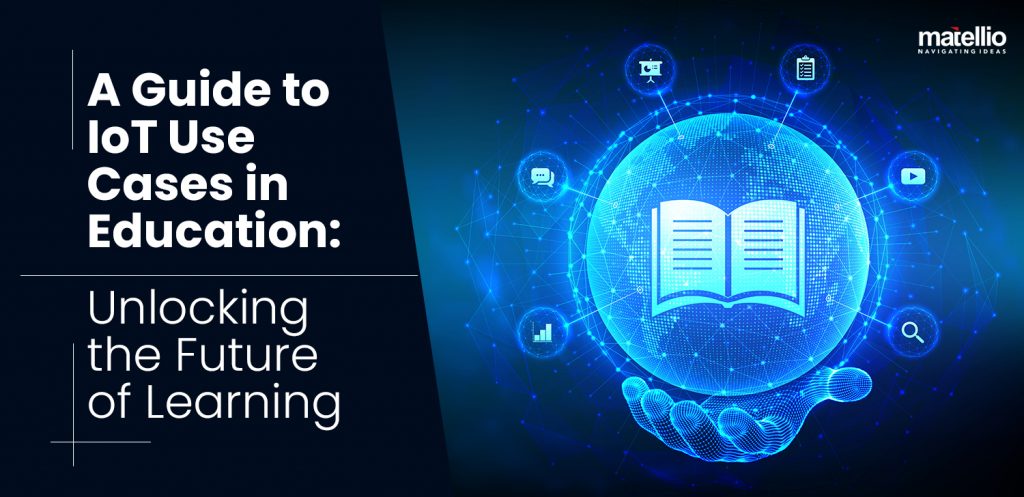Educational technology blends teaching with modern tech tools. It enhances learning processes through innovative applications.
In today’s digital age, leveraging educational technology is integral for effective curriculum delivery. Teachers and students benefit from a range of tools, including Learning Management Systems (LMS), educational apps, and interactive whiteboards. These technologies facilitate engaging, interactive, and personalized learning experiences, extending beyond traditional classroom boundaries.
They serve to diversify instruction methods and accommodate various learning styles. Incorporating multimedia resources, virtual simulations, and gamification, educational technology revolutionizes how knowledge is acquired and retained. With a focus on collaboration and communication, it also fosters essential 21st-century skills, preparing learners for a tech-centric future. As industries evolve, so does the demand for tech-integrated education, making this field pivotal in shaping tomorrow’s workforce.

Credit: tech.ed.gov
The Emergence Of Educational Technology
Educational technology has transformed learning. It began with simple tools. Now it includes digital wonders. This journey shows growth and change in how we teach and learn. Let’s explore from simple chalkboards to immersive virtual reality experiences.
From Chalkboards To Virtual Reality
Long ago, chalkboards were the peak of classroom technology. Teachers wrote on them. Students learned from them. Today, virtual reality (VR) takes students to new worlds. From dusty chalk to sleek VR headsets, education is now an exciting adventure.
- Chalkboards allowed group teaching.
- Overhead projectors came next, showing diagrams and notes.
- Computers and internet brought information to our fingertips.
- Interactive whiteboards made lessons dynamic.
- VR now offers interactive, immersive learning.
Key Milestones In Edtech Evolution
| Year | Milestone |
|---|---|
| 1800s | Chalkboards revolutionize group instruction. |
| 1925 | Film projectors bring visuals into the classroom. |
| 1960s | Overhead projectors become popular teaching tools. |
| 1980s | Personal computers introduce digital learning. |
| 1990s | Internet connects classrooms worldwide. |
| 2000s | Smartboards make lessons interactive. |
| 2010s | Tablets and e-books make learning mobile. |
| 2020s | VR and AR create rich, immersive learning experiences. |
Each milestone reflects innovation and progress. Students today have tools for interactive learning. Education has evolved. It continues to shape minds in exciting ways.
Components Of Educational Technology
Educational Technology transforms how we learn. It includes tools that make learning fun and easy.
The world of education constantly evolves with new tech. Let’s explore the key components.
Hardware Innovations Reshaping Classrooms
Classrooms today are high-tech spaces. Students use gadgets to explore and create. Here are a few:
- Interactive Whiteboards: Make lessons visual and engaging.
- Tablets and Laptops: Allow personalized learning paths for students.
- 3D Printers: Bring concepts to life right before our eyes.
Software Solutions: Learning Management Systems
Software is the unseen guide in education. It helps organize and track learning. Look at these systems:
| Learning Management System | Key Feature |
|---|---|
| Canvas | Collaborative spaces and assessment tools. |
| Moodle | Customizable and open-source platform. |
| Blackboard | Integrates with many educational tools and resources. |
These systems track progress and make learning interactive.
Pedagogical Shift With Edtech
Education is changing fast. With Educational Technology (EdTech), schools and teachers are shifting their methods. We call this the pedagogical shift. It means new ways to teach and learn. EdTech uses computers, the internet, and other digital tools. This makes learning fun and tailored to each student.
Interactive Learning Versus Traditional Methods
Interactive learning is when students take part in the lesson. This is different from traditional methods, where they just listen. With EdTech, learning becomes a two-way street. Students click, drag, and drop. They play games and solve puzzles. Teachers get tools like smart boards and quizzes online. This makes class exciting and helps students remember lessons better.
Personalization Of Education Through Technology
Every student is unique. EdTech understands this. That’s why it helps make learning personal. How? By letting students learn at their own pace. With technology, it’s easy to track progress. Teachers can see who needs extra help and who can go further. There are apps and programs for every subject. These tools adjust to each student’s level.
| Benefit | Description |
|---|---|
| Adaptive Learning | Software adapts in real-time to student’s ability. |
| Immediate Feedback | Students get help right as they learn. |
| Learning Analytics | Tools give detailed reports on progress. |
| Flexible Learning | Learn anytime, anywhere with online resources. |
- Interactive tasks
- Games that make learning fun
- Video lessons for tricky topics
Features of Personalized EdTech Include:
- Assess student’s starting level
- Set personalized goals
- Use tech for practice and help
- Review and adjust as they grow
Steps to Personalize Learning with EdTech:

Credit: blog.edmingle.com
Impact On Teachers And Educators
Imagine a classroom where teachers harness technology to push boundaries, making learning vibrant. Educational technology reshapes how educators teach, offering endless resources at their fingertips. Let’s explore its transformative impact.
Enhancing Teaching Methods With Tech Tools
Teachers now tailor lessons with tech that engages. Interactive whiteboards and learning apps make every topic come alive. The results? Improved student involvement and clearer understanding.
- Students get instant feedback with quiz platforms.
- Virtual reality (VR) takes learning beyond the classroom.
- Collaborative tools encourage teamwork.
Professional Development In The Digital Age
The digital age brings continuous learning to teachers’ fingertips. Online workshops and e-courses foster new skills without leaving home. The table below showcases this shift:
| Traditional PD | Digital Age PD |
|---|---|
| Conferences | Webinars |
| In-person workshops | Online courses |
| Printed resources | Interactive e-books |
Networking among educators spans continents with social media and online forums. Personal learning networks grow exponentially, sparking innovation in teaching strategies.
Challenges And Controversies
Educational Technology transforms how we learn. But it raises concerns. Some students struggle to access digital tools. Others worry about their private information. Here’s a closer look at these important issues.
Digital Divide And Accessibility Issues
Not everyone can reach EdTech. We call it the Digital Divide. It means a gap in who has digital tools and who does not. This gap makes learning hard for some. Schools and leaders try to close this gap.
- Internet connections can be weak in rural places.
- Good devices can cost too much for some families.
- Not everyone knows how to use technology well.
Privacy Concerns In Edtech
Privacy is a big deal in EdTech. Students and teachers need safe data. But, sometimes, information gets shared when it shouldn’t. People worry about who can see their details.
- EdTech can collect data without asking.
- Data could be used in wrong ways.
- Companies must protect student information.
| Issue | Details |
|---|---|
| Access to EdTech | Varies by location and income. |
| Device Quality | Affects learning experience. |
| Usage Skill Level | Not equal for all students. |
| Data Collection | Often happens quietly. |
| Information Misuse | A risk that worries many. |
| Security | Essential for trust in EdTech. |
The Future Landscape Of Learning
The landscape of learning is rapidly evolving, shaped by constant innovation in technology. Known as educational technology or EdTech, this field is revolutionizing the way knowledge is acquired, processed, and applied. As we look towards the horizon, the fusion of technology and education promises a future brimming with potential, transforming traditional classrooms and educational practices.
Predictions For Edtech Advancements
The journey ahead for EdTech teems with potential. Experts foresee a transformative shift.
- Virtual Reality (VR) will transport learners to immersive environments.
- Artificial Intelligence (AI) will provide personalized learning experiences.
- Learning through Augmented Reality (AR) will blend real-world interactions with educational content.
- Big Data will tailor curricula to individual student needs, enabling custom learning paths.
Advancements will also include adaptive learning platforms that grow with learners and game-based learning that makes education both fun and engaging.
Preparing Students For A Technological World
As technology becomes more integral to our daily lives, preparing students is paramount.
- Embedding technological literacy within curriculums is essential.
- Students must learn coding and digital skills early on.
- Critical thinking and problem-solving must be at the core of education to navigate future challenges.
This preparation is not just about using tools; it’s about understanding their impact, potential, and limitations.

Credit: www.matellio.com
Frequently Asked Questions Of What Is Educational Technology
What Is Educational Technology?
Educational technology, often referred to as EdTech, is the practice of integrating digital tools, resources, and theories to facilitate and enhance learning. It leverages software, hardware, and educational theories to improve teaching methods and learning outcomes.
How Does Educational Technology Benefit Students?
Students benefit from educational technology through personalized learning, increased engagement, and access to a wealth of online resources. It aids in developing necessary 21st-century skills like critical thinking and digital literacy.
What Are Common Educational Technology Tools?
Common EdTech tools include learning management systems (LMS), educational apps, interactive whiteboards, and online assessment platforms. These tools assist in delivering, managing, and tracking educational content.
Can Educational Technology Improve Collaboration?
Yes, educational technology can vastly improve collaboration by enabling students and teachers to work together in virtual environments, utilizing tools like shared documents, educational social media platforms, and discussion forums.
Conclusion
Understanding educational technology is crucial in modern learning environments. It enhances teaching methods and learning experiences. Embracing this tech leads to improved engagement and knowledge retention. Let’s empower educators and students alike by leveraging these innovative tools for a brighter educational future.
Keep exploring and investing in educational technology for continuous advancement.












































Leave a Reply